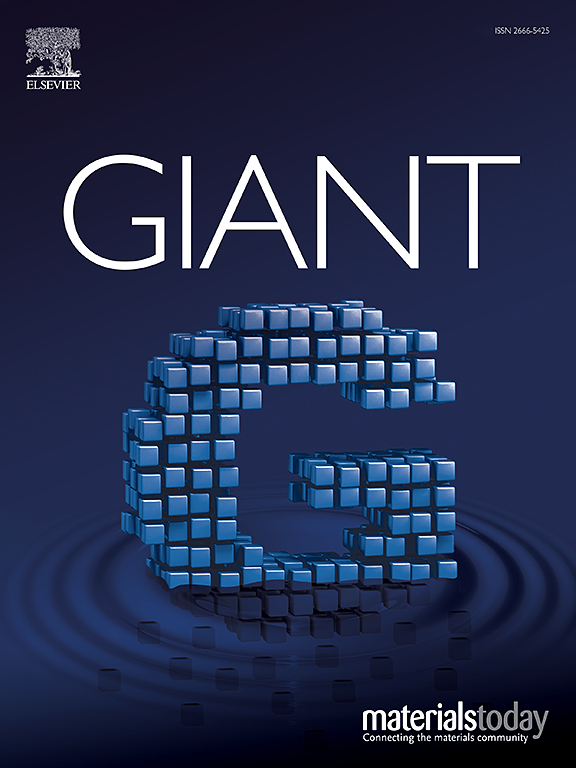Self-assembled arginine-based eutectogel microneedles as novel transdermal delivery system for pigmentation treatment
IF 4.9
1区 化学
Q2 CHEMISTRY, MULTIDISCIPLINARY
引用次数: 0
Abstract
An efficient and patient-friendly strategy for administering skin pigmentation is achieved through microneedles (MNs) -mediated drug delivery into the dermal interstitium across the stratum corneum. In this work, we design a eutectogel to fabricate dissolving MNs delivery system, which were self-assembled from small molecules of arginine and sorbitol driven by hydrogen bonding interaction. The hydrogen bond-network structure conferred the arginine-sorbitol eutectogel (AsE) MNs with sufficient mechanical properties, which enable it easily pierce the thickened stratum corneum of the skin and directly deliver drugs into the deep skin lesions. Moreover, the unique eutectogel exhibits super hydrophilic properties and makes the AsE/MNs display completely dissolution and diffuse drugs rapidly. The AsE/MNs exhibit high biocompatibility and degradability in vivo and do not cause toxicity or irritation when being applied. AsE/MNs possesses remarkable drug loading capacity and stability, moreover, the permeated amounts of rutin on mice skin in the AsE/MNs was more than 15 times enhancement over that of the rutin solution group in vitro. Furthermore, the results of pharmacodynamic study in vivo demonstrated that AsE/MNs loading rutin could effectively prevent the skin pigmentation and tissue damage induced by UV irradiation. Overall, this work validated that AsE/MNs are a valuable platform for improving the transdermal bioavailability of drugs.

自组装精氨酸基共聚乙二醇微针作为一种新型的色素沉着治疗透皮给药系统
通过微针(MNs)介导的药物通过角质层进入真皮间质,实现了一种有效且对患者友好的皮肤色素沉着管理策略。在这项工作中,我们设计了一个共聚体来制造溶解的纳米粒子递送系统,该系统是由精氨酸和山梨醇的小分子在氢键相互作用的驱动下自组装而成的。氢键网络结构赋予精氨酸-山梨醇共聚醚(AsE) MNs足够的力学性能,使其易于穿透增厚的皮肤角质层,直接将药物输送到皮肤深部病变。此外,独特的共聚基表现出超亲水性,使AsE/MNs完全溶解并迅速扩散药物。AsE/MNs在体内具有很高的生物相容性和可降解性,并且在应用时不会引起毒性或刺激。AsE/MNs具有显著的载药能力和稳定性,并且在体外实验中,与芦丁溶液组相比,芦丁在小鼠皮肤上的渗透量增加了15倍以上。此外,体内药效学研究结果表明,负载AsE/MNs的芦丁能有效预防紫外线照射引起的皮肤色素沉着和组织损伤。总的来说,这项工作验证了AsE/MNs是提高药物透皮生物利用度的一个有价值的平台。
本文章由计算机程序翻译,如有差异,请以英文原文为准。
求助全文
约1分钟内获得全文
求助全文
来源期刊

GIANT
Multiple-
CiteScore
8.50
自引率
8.60%
发文量
46
审稿时长
42 days
期刊介绍:
Giant is an interdisciplinary title focusing on fundamental and applied macromolecular science spanning all chemistry, physics, biology, and materials aspects of the field in the broadest sense. Key areas covered include macromolecular chemistry, supramolecular assembly, multiscale and multifunctional materials, organic-inorganic hybrid materials, biophysics, biomimetics and surface science. Core topics range from developments in synthesis, characterisation and assembly towards creating uniformly sized precision macromolecules with tailored properties, to the design and assembly of nanostructured materials in multiple dimensions, and further to the study of smart or living designer materials with tuneable multiscale properties.
 求助内容:
求助内容: 应助结果提醒方式:
应助结果提醒方式:


